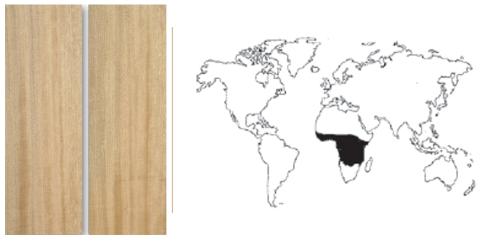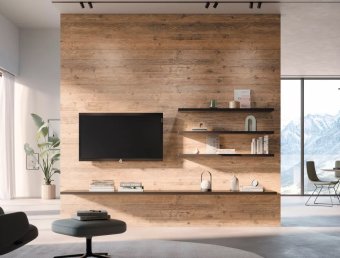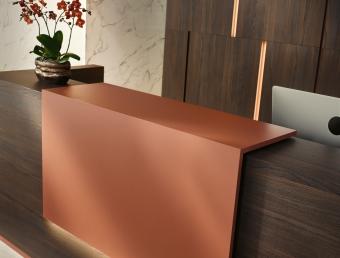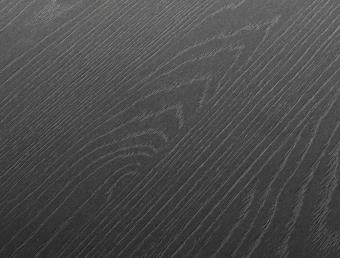Afromorsia
Denominación científica:
Pericopsis elata Van Meeuwen
Procedencia geográfica:
Africa. Included in the list of endangered species by the CITES.
- Sapwood: light yellowish grey colour.
- Heartwood: yellowish grey coloured, it darkens with the lights effects.
- Fiber: straight or intertwined.
- Grain: varies from thin to medium size.
- &;8226; Defects: the possible tannin can cause blue spots.

a
b
c
d
e
f
g
h
i
j
k
l
m
n
o
p
q
r
s
t
u
v
w
x
y
z
Impregnabilidad
- Sapwood: capable of being impregnated.
- Heartwood: no capable of being impregnated.
Propiedades mecánicas
- Resistance to static flexion 1,190 kg/cm2.
- Elasticity module 129,000 Kg/cm2.
- Resistance to parallel compression 650 kg/cm2.
Mecanización
- Sawing process: powerful aspiration equipments.
- Drying process: slow. Risk of deformations and crack formation.
- Gluing process: no difficulties.
- Nailing and screwing process: pre-drilling is required.
- Finish: no difficulties.
Propiedades físicas
- Apparent density (12% humidity): 690kg/m3.
- Dimensional stability:
- Volumetric contraction coefficient 7.8% medium nervous wood.
- Hardness (Chaláis-Meudon) 5.9 semi-hardwood.
Observaciones
- És la fusta africana més semblant a la Teka asiàtica
- Atenció, molt important: És una espècie protegida pel conveni CITES. Està recollida en l'Apèndix II. Per tant, necessita d'un permís especial d'exportació o d'un certificat de reexportació Ha d'exigir-se quan es realitzi la seva compra



